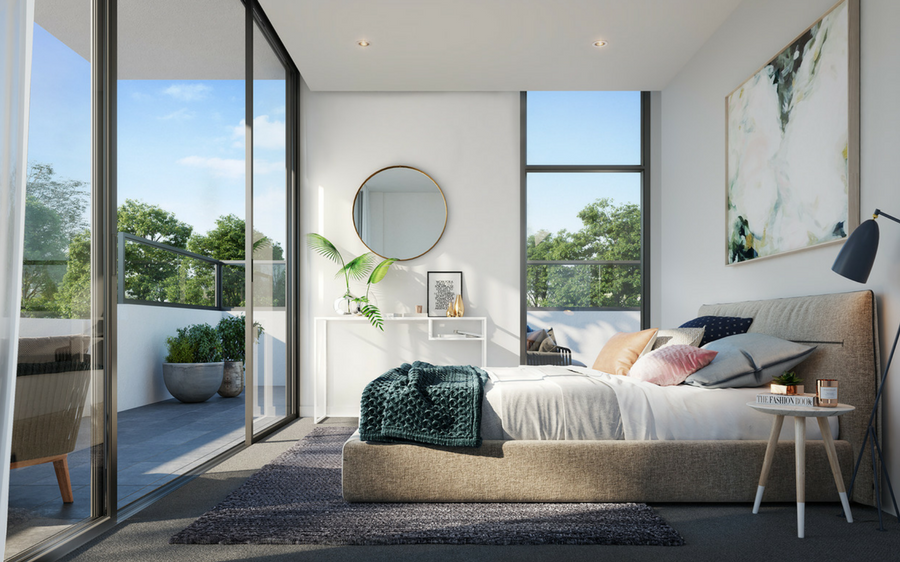
The evolution of property marketing
As the number of property marketers increases and the property market flattens, selling value over volume becomes critical for businesses in the industry to remain competitive. The challenge lies in standing out in a saturated digital and offline space and impressing prospective home buyers – buyers who now have a world of alternatives at their fingertips and enhanced, Google-fed intelligence.
Working closely with our clients in the property space, we have seen first-hand the effect the digital revolution has had on the landscape. Disruptive innovation has dictated the need to employ new mediums to find new buyers and demanded the creation of better content to engage them.
A picture of emotion
The trend across all types of property marketing, from digital billboards to web galleries to print brochures, is that of a dramatic uplift in image and copy quality. But there’s more at play than high resolution and good grammar. The quality we’re talking about is, in fact, an emotional one.
The bend towards more enchanting or emotive marketing is global. Advertising agencies have well and truly dropped the descriptive ‘what’ and devoted themselves to the emotional ‘why’. Of course, in property marketing, the ‘why’ must be enthralling enough to convince a reader to embark upon what is likely their biggest investment journey yet.
With emotional elements emerging through the property’s marketing story, a richer bond can be cultivated between the reader and the property – a bond that could potentially be cashed in if it’s strong enough to convert. To craft this immediately engaging story and form the all-important emotional bond, imagery is key.
Today, marketers have almost boundless creative licence, being able to manipulate photography and create pseudo-realistic renders of unbuilt buildings. By channelling this artistic freedom to depict properties as real, lived-in homes, marketers can strategically focus on conveying emotion through their imagery.
Renders of a wardrobe full of clothes, a bathroom complete with scented candles and Aesop soap, a living room decorated with niche wall art – these are all details that invite the audience to imagine themselves already living in the home. And thus, an emotional attachment is formed.
Getting the copy right
Eye-catching as beautiful imagery may be, when it comes to property advertising, copy is by no means a redundant form of persuasion – on the contrary. Beyond the power of the written word, any astute marketer will be familiar with the holy grail that is strong SEO equity, the traffic-luring authority that necessitates the continuous output of high-quality copy. The most successful property marketers that will be heard above the noise are those that can craft quality copy that attracts, engages and enchants the reader – and Google, of course.
Rather than focusing on a humdrum monologue of facts and figures, the words must embody the rich experience that the home can offer and speak to the reader on a personal level. They should align with the imagery to let the reader know how well their fashion addiction will be accommodated, how vanilla will fill the room during Aesop bubble-baths and how fantastic the art they picked up in Europe will look on the walls.
While expressing the lavish living possibilities is key, the editorial needn’t be entirely devoid of accurate detail. Timber floorboards warming the sitting room’s aesthetic deserve a mention. The feature pendant lighting adding a vintage charm to the hallway shouldn’t be left out either. You get the idea.
The same rule applies for advertising location. Simply listing green spaces, transport links and nearby shops will offer nothing more than a quick gander on Google Maps can. Effective copy speaks of picnics in the park, effortless commutes to the CBD and Mama’s Little Bakery, a local favourite, of course.
Captivating the buyer
A careful composition of alluring visuals and seductive language that successfully convey the opportunity for an elevated lifestyle is the key to driving sales in property marketing.
Across the expensive brochures that invite eager page-turning, the Facebook campaigns that have all of a split second to engage newsfeed-scrollers and the websites that host hours of browsers and dreamers looking for their next home, the emotional details must be captivating, consistent and ever-present.
Even in a crowded property market, those who can build an emotive story and place it at the heart of their marketing architecture should be as safe as houses.
image source: apartmentdevelopments.com.au
